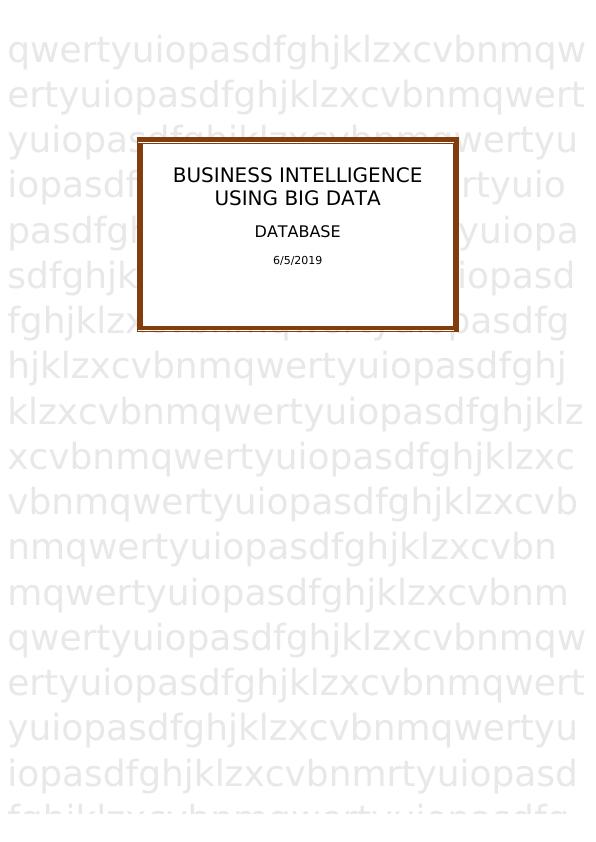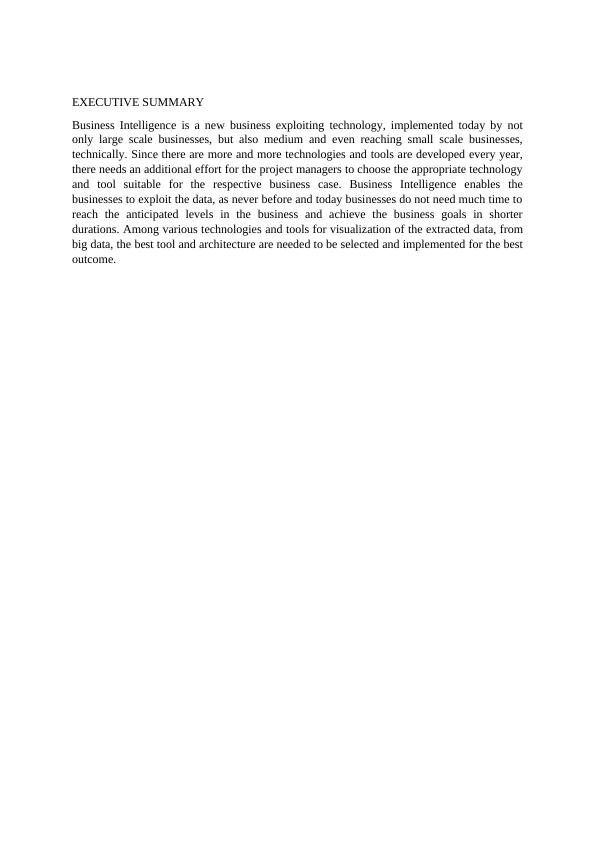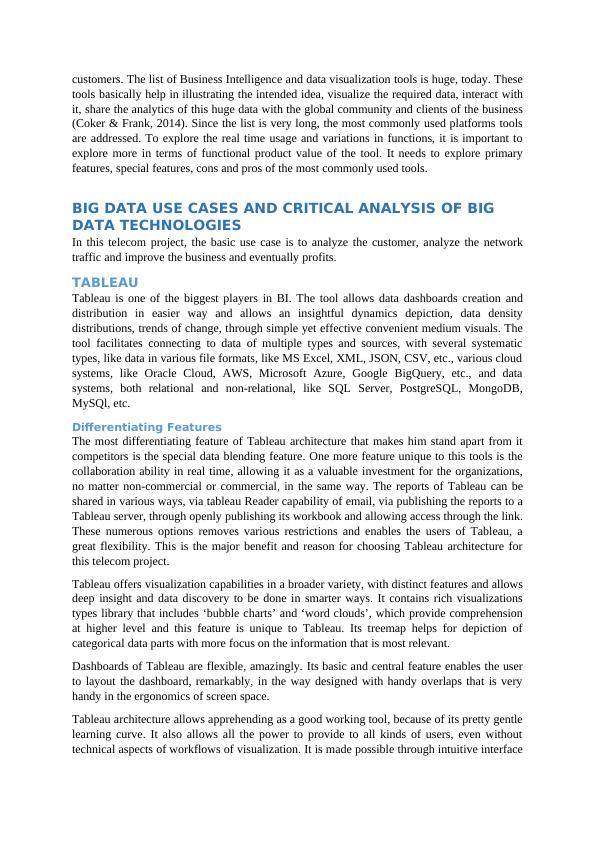Business Intelligence Using Big Data
Produce a report based on the Big Data strategy document developed for Assessment 2, identifying Big Data use cases, analyzing different Big Data technologies, discussing Big Data analytics and business intelligence tools, and specifying the Big Data technology stack and processing architecture required to support the use cases.
Added on 2023-01-20
About This Document
Business Intelligence Using Big Data
Produce a report based on the Big Data strategy document developed for Assessment 2, identifying Big Data use cases, analyzing different Big Data technologies, discussing Big Data analytics and business intelligence tools, and specifying the Big Data technology stack and processing architecture required to support the use cases.
Added on 2023-01-20
End of preview
Want to access all the pages? Upload your documents or become a member.




